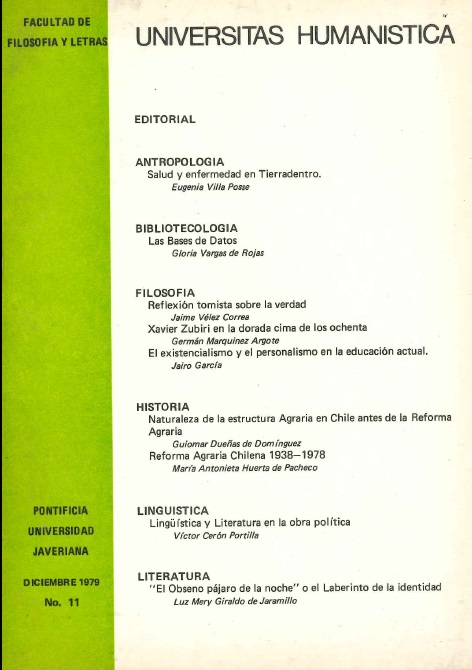Abstract
Se intenta señalar en este escrito la situación del área rural chilena en los años que anteceden a la Reforma Agraria. El estudio está circunscrito en el tiempo y en el espacio. En el tiempo, a partir de los datos arrojados por el censo del año 1955, se ha utilizado preferentemente material bibliográfico que analiza los datos recogidos por el censo. Y en el espacio, el estudio hace referencia a la zona central, región considerada como el corazón agrícola de Chile.
En este estudio se trata de evidenciar el hecho de que el sistema tradicional de tenencia de la tierra ha sido un importante factor que ha contribuido al estancamiento de la agricultura de ese país.
1 — Marco geográfico histórico
La parte central de Chile se considera como el punto focal geográfico y socioeconómico del país. Se extiende desde Coquimbo por el norte hasta el río Bio—Bio por el sur e incluye las provincias de Aconcagua, Valparaíso, Santiago, O'Higgins, Colchagua, Curicó, Talca, Maule, Linares y Nuble.
Esta región es el corazón de la nación chilena y el hogar de la gran mayoría de la población.

This journal provides immediate open access to its content on the principle that making research freely available to the public, encourages greater global exchange of knowledge.
The journal Universitas Humanística is registered under a Creative Commons Attribution 4.0 International Public License. Thus, this work may be reproduced, distributed, and publicly shared in digital format, as long as the names of the authors and Pontificia Universidad Javeriana are acknowledged. Others are allowed to quote, adapt, transform, auto-archive, republish, and create based on this material, for any purpose (even commercial ones), provided the authorship is duly acknowledged, a link to the original work is provided, and it is specified if changes have been made. Pontificia Universidad Javeriana does not hold the rights of published works and the authors are solely responsible for the contents of their works; they keep the moral, intellectual, privacy, and publicity rights.
Approving the intervention of the work (review, copy-editing, translation, layout) and the following outreach, are granted through an use license and not through an assignment of rights. This means the journal and Pontificia Universidad Javeriana cannot be held responsible for any ethical malpractice by the authors. As a consequence of the protection granted by the use license, the journal is not required to publish recantations or modify information already published, unless the errata stems from the editorial management process. Publishing contents in this journal does not generate royalties for contributors.


